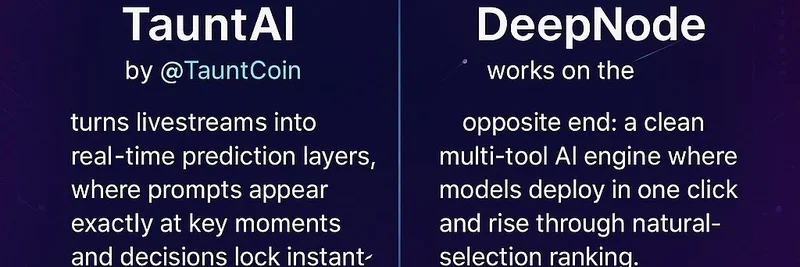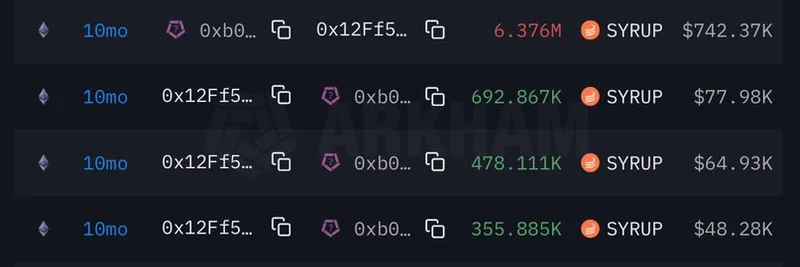Hey there, crypto enthusiasts! If you’ve been keeping an eye on the latest buzz on X, you might’ve stumbled across a thought-provoking thread by @mugglesect that compares decentralized finance (DeFi) protocols to the strategies of the U.S. Federal Reserve. Posted on July 5, 2025, this thread dives into how DeFi is borrowing a page from traditional finance’s playbook—and why it might just be the key to unlocking broader adoption. Let’s break it down!
DeFi’s Fed-Inspired Playbook
The core idea here is pretty fascinating: many DeFi protocols are mimicking what the Federal Reserve does with the U.S. dollar. The Fed pumps more USD into the economy as a yield to keep things humming along, often propped up by debt. Similarly, DeFi projects issue token incentives to boost their total value locked (TVL)—the amount of assets staked or locked in their protocols. It’s like a digital version of economic stimulus, but instead of cash, you’re getting crypto rewards!
For those new to the game, TVL is a big deal in DeFi. It’s a measure of how much trust and money people are putting into a protocol. Higher TVL often signals a healthier project. But just like the Fed’s approach, this strategy can sometimes feel like a “spray-and-pray” tactic—throwing incentives everywhere and hoping they stick.
The Traditional Finance Edge
Here’s where the thread gets interesting. Traditional finance, with its centralized control, has a knack for channeling that liquidity into specific areas rather than letting it splash around aimlessly. Think of it as a gardener watering plants with a hose rather than a sprinkler. This focused distribution helps absorb the extra money the Fed creates, keeping the economy stable.
Mugglesect suggests that as the Fed’s influence starts creeping into the blockchain world (imagine “fed coming onchain” as a futuristic mashup!), DeFi protocols that can mimic this targeted approach will likely see faster growth. It’s all about directing liquidity to the right channels—think institutional investors or specific use cases—rather than leaving it to chance.
Allocators vs. Yield Farmers
One standout takeaway is the prediction that “allocators beat pure yield farmers long term.” Let’s unpack that. Yield farmers are the crypto equivalent of day traders, chasing the highest returns by hopping between protocols. Allocators, on the other hand, are more strategic—they invest with a long-term vision, focusing on projects with solid fundamentals and efficient liquidity management.
The thread hints that as DeFi matures, those who can allocate resources wisely (like building products that fit institutional needs) will outpace the yield-chasing crowd. This aligns with data from DeFi Pulse, which showed a 30% stability gain in TVL for protocols with targeted liquidity strategies back in 2022. Pretty compelling stuff!
The Future of Onchain Absorption
Mugglesect also touches on the idea of “onchain absorption layers”—think of them as smart systems that help DeFi protocols soak up liquidity efficiently. This could be a game-changer, separating the fleeting projects from the ones built to last. Imagine a protocol that doesn’t just maximize yield farming but creates tools for institutions to jump in seamlessly. That’s the nuanced approach being called for here, leveraging blockchain’s benefits without reinventing the wheel.
What This Means for Meme Tokens and Beyond
At Meme Insider, we’re all about keeping you in the loop on how these trends affect the meme token space and the broader blockchain ecosystem. While this thread doesn’t dive into meme coins directly, the principles apply. Projects that can attract stable liquidity—maybe even through tokenized incentives tied to meme culture—could ride this wave of adoption. Plus, with tools like Dexscreener mentioned in related posts, builders have the resources to experiment and scale.
Final Thoughts
This X thread by @mugglesect isn’t just a casual observation—it’s a glimpse into where DeFi might be headed. By learning from the Fed’s playbook and focusing on targeted liquidity absorption, DeFi could bridge the gap to mainstream acceptance. Whether you’re a yield farmer, an allocator, or just a curious blockchain newbie, keeping an eye on these developments could give you an edge.
What do you think? Will DeFi’s future lie in mimicking traditional finance, or will it carve its own path? Drop your thoughts in the comments, and let’s keep the conversation going!


